
Patrick Albert Moore is a Canadian industry consultant, former activist, an early member and past president of Greenpeace Canada. Since leaving Greenpeace in 1986, Moore has criticized the environmental movement for what he sees as scare tactics and disinformation, saying that the environmental movement "abandoned science and logic in favor of emotion and sensationalism". Greenpeace has criticized Moore, calling him "a paid spokesman for the nuclear industry, the logging industry, and genetic engineering industry" who "exploits long-gone ties with Greenpeace to sell himself as a speaker and pro-corporate spokesperson".

Tompkinsville is a neighborhood in northeastern Staten Island in New York City. Named for Daniel D. Tompkins, sixth Vice President of the United States (1817–1825), the neighborhood sits on the island's eastern shore, along the waterfront facing Upper New York Bay, between St. George on the north and Stapleton on the south; however, it is considered part of the North Shore by the island's residents.
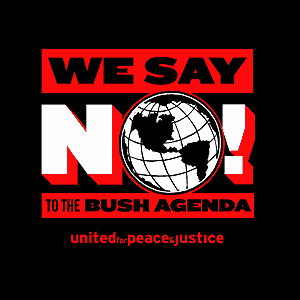
United for Peace and Justice (UFPJ) is a coalition of more than 1,300 international and U.S.-based organizations opposed to "our government's policy of permanent warfare and empire-building."

Veterans for Peace is an organization founded in 1985. Initially made up of US military veterans of World War II, the Korean War, the Vietnam War, the Gulf War, the War in Afghanistan and the Iraq War, and as well as peacetime veterans and non-veterans, it has since spread overseas and has an active offshoot in the United Kingdom. The group works to promote alternatives to war.
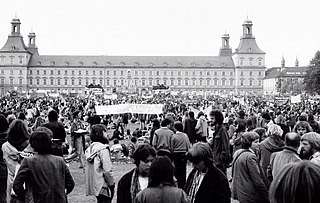
The anti-nuclear movement is a social movement that opposes various nuclear technologies. Some direct action groups, environmental movements, and professional organisations have identified themselves with the movement at the local, national, or international level. Major anti-nuclear groups include Campaign for Nuclear Disarmament, Friends of the Earth, Greenpeace, International Physicians for the Prevention of Nuclear War, Peace Action, Seneca Women's Encampment for a Future of Peace and Justice and the Nuclear Information and Resource Service. The initial objective of the movement was nuclear disarmament, though since the late 1960s opposition has included the use of nuclear power. Many anti-nuclear groups oppose both nuclear power and nuclear weapons. The formation of green parties in the 1970s and 1980s was often a direct result of anti-nuclear politics.
The Don't Make a Wave Committee was the name of the anti-nuclear organization which later evolved into Greenpeace, a global environmental organization. The Don't Make a Wave Committee was founded in Vancouver, British Columbia, Canada to protest and attempt to halt further underground nuclear testing by the United States in the National Wildlife Refuge at Amchitka in the Aleutian Islands of Alaska. The Don't Make a Wave Committee was first formed in October 1969 and officially established in early 1970.
The Cross-Harbor Rail Tunnel is a proposed freight rail transport tunnel under Upper New York Bay in the Port of New York and New Jersey between northeastern New Jersey and Long Island, including southern and eastern New York City.

The Vieques, Puerto Rico, Naval Training Range was a United States naval facility located on the island of Vieques, about 5 miles east of mainland Puerto Rico. Starting in November 1941, the navy used the range for military exercises. Military operations ended in 2001, with the Navy completely leaving the area in 2003.

Naval Outlying Landing Field Coupeville—or NOLF Coupeville—(ICAO: KNRA, FAA LID: NRA) is a military airport located two miles (3 km) southeast of Coupeville, Washington, in Island County. The airfield is owned and operated by the United States Navy. NOLF Coupeville nearly touches State Route 20 and is about 10 miles south of the Whidbey Island Naval Air Station.
In 1984, Prime Minister David Lange banned nuclear-powered or nuclear-armed ships from using New Zealand ports or entering New Zealand waters. Under the New Zealand Nuclear Free Zone, Disarmament, and Arms Control Act 1987, territorial sea, land and airspace of New Zealand became nuclear-free zones. This has since remained a part of New Zealand's foreign policy.

The anti-nuclear movement in the United States consists of more than 80 anti-nuclear groups that oppose nuclear power, nuclear weapons, and/or uranium mining. These have included the Abalone Alliance, Clamshell Alliance, Committee for Nuclear Responsibility, Nevada Desert Experience, Nuclear Information and Resource Service, Physicians for Social Responsibility, Plowshares Movement, United Steelworkers of America (USWA) District 31, Women Strike for Peace, Nukewatch, and Women's International League for Peace and Freedom. Some fringe aspects of the anti-nuclear movement have delayed construction or halted commitments to build some new nuclear plants, and have pressured the Nuclear Regulatory Commission to enforce and strengthen the safety regulations for nuclear power plants. Most groups in the movement focus on nuclear weapons.
Canada has an active anti-nuclear movement, which includes major campaigning organisations like Greenpeace and the Sierra Club. Over 300 public interest groups across Canada have endorsed the mandate of the Campaign for Nuclear Phaseout (CNP). Some environmental organisations such as Energy Probe, the Pembina Institute and the Canadian Coalition for Nuclear Responsibility (CCNR) are reported to have developed considerable expertise on nuclear power and energy issues. There is also a long-standing tradition of indigenous opposition to uranium mining.
Anti-nuclear organizations may oppose uranium mining, nuclear power, and/or nuclear weapons. Anti-nuclear groups have undertaken public protests and acts of civil disobedience which have included occupations of nuclear plant sites. Some of the most influential groups in the anti-nuclear movement have had members who were elite scientists, including several Nobel Laureates and many nuclear physicists.
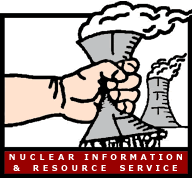
More than 80 anti-nuclear groups are operating, or have operated, in the United States. These include Abalone Alliance, Clamshell Alliance, Greenpeace USA, Institute for Energy and Environmental Research, Musicians United for Safe Energy, Nevada Desert Experience, Nuclear Control Institute, Nuclear Information and Resource Service, Public Citizen Energy Program, Shad Alliance, and the Sierra Club. These are direct action, environmental, health, and public interest organizations who oppose nuclear weapons and/or nuclear power. In 1992, the chairman of the Nuclear Regulatory Commission said that "his agency had been pushed in the right direction on safety issues because of the pleas and protests of nuclear watchdog groups".

Anti-nuclear protests began on a small scale in the U.S. as early as 1946 in response to Operation Crossroads. Large scale anti-nuclear protests first emerged in the mid-1950s in Japan in the wake of the March 1954 Lucky Dragon Incident. August 1955 saw the first meeting of the World Conference against Atomic and Hydrogen Bombs, which had around 3,000 participants from Japan and other nations. Protests began in Britain in the late 1950s and early 1960s. In the United Kingdom, the first Aldermaston March, organised by the Campaign for Nuclear Disarmament, took place in 1958. In 1961, at the height of the Cold War, about 50,000 women brought together by Women Strike for Peace marched in 60 cities in the United States to demonstrate against nuclear weapons. In 1964, Peace Marches in several Australian capital cities featured "Ban the Bomb" placards.
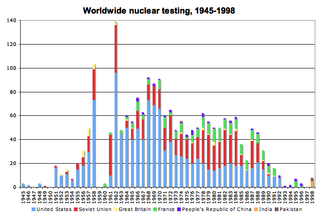
The application of nuclear technology, both as a source of energy and as an instrument of war, has been controversial.
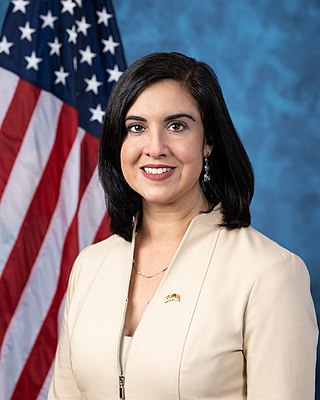
Nicole Malliotakis is an American politician serving as the U.S. representative for New York's 11th congressional district since 2021. Her constituency covers Staten Island and southern Brooklyn.
There was much controversy during the construction of Jeju Naval Base, which is a joint civil and Republic of Korea Navy base constructed by the South Korean government in Gangjeong village on the southern coast of Jeju Island, South Korea. By 2011, construction had been halted seven times by protesters concerned about the base's environmental impact and who saw it as a US-driven project aimed at China, rather than enhancing South Korean defense. In July 2012, the South Korean Supreme Court upheld the base's construction. It is expected to host up to 20 military vessels and occasional civilian cruise ships.
Katsumi Furitsu has a doctorate in medical genetics and radiation biology from Japan's Osaka University and currently works in the genetics department of the Hyogo College of Medicine. She became involved in peace and anti-nuclear movement activities as a student in 1980, helping radiation victims. From 1986 to 2000, Furitsu was a member of the "Investigation committee of A-bomb survivors" at Osaka's Hannan Chuo Hospital. She visits the Chernobyl disaster area every year and is a founder of Osaka's "Chernobyl Relief Group of Kansai". In 1992, Katsumi Furitsu attended the "World Uranium Hearing" in Salzburg. In 1996, she testified to the Permanent People’s Tribunal, Chernobyl Session in Vienna. Since 2004 Furitsu has been a member of the International Coalition to Ban Uranium Weapons.
Stephen Anderson Smith is an American environmentalist, clean energy advocate and peace activist. He was a former Democratic nominee for Tennessee's 2nd congressional district in the United States House Representatives in 1996. In 1988, Smith was a cofounder of the Foundation for Global Sustainability and the Oak Ridge Environmental Peace Alliance (OREPA). He is currently the Executive Director of the Southern Alliance for Clean Energy and the Southern Alliance for Clean Energy Action Fund.











